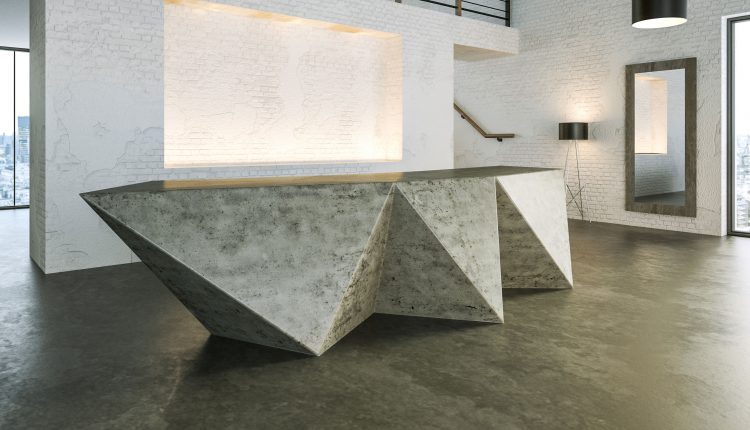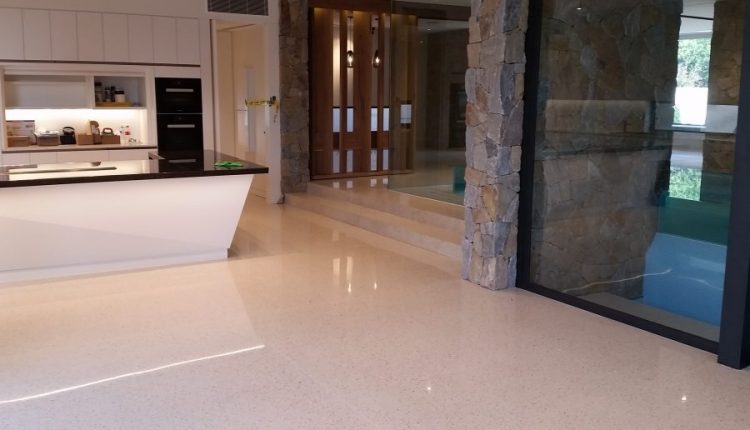FAQ
We all know that the world is full of abbrievations and acronyms, so you will be unsurprised to know that polished cement flooring and furniture industry is the same. So to make your life a little easier we have put together a glossary of terms to put into real speak what everything means .
Why Choose Us?
Concas has over 15 years’ worth of experience in this industry, and we work hard to bring the product that you need. We are passionate about our job, and love our products, so it doesn’t matter if you are a domestic customer needing a new concrete sink, or a large organisaion needling a large concrete polished floor, our professionalism and commitment to get the job done remains the same.
We work locally in Wexford and cover the island of Ireland to offer a complete bespoke service. We’re one of the top polished concrete floor companies that ensures our team is comprised of experienced craftsmen who have worked on projects in the USA, Australia and London. The team are HTC Superfloor certified contractors.
Our Pricing
Because our bathroom and furniture products are bespoke, and the concrete floor polishing services we provide are dependant on a number of different factors, not one price fits every customer. But you can rest assured that our pricing strategy reflects our core values.
Honesty
Transparency
Commitment
So get in touch with us using the link below to be taken to our contact us screen where you can provide us which your details for a no obligation quote.
Glossary Of Terms
A
Abrasion Resistance – Basically, this is how well a floor surface resisits every day ware and tear and rubbing.
Accelerator – This is the admixture that is generally used to speed up the rate of setting concrete.
Aggregate – A mixture of materials, such as sand, stone, rocks or gravel. This is normally used as part of a concrete mixing process to improve its overall structure.
Admixture – Normally added along with water and cement, admixture is used to get the consistency of mix and setting you requie
Air Entrainment – The process of creating air bubbles in concrete, the reason for this is to increase the life of the hardened concrete, particularly when there is fluxuation in temperatures
B
Bleeding – A form of seperation which involves water coming to the surface of freshly laid concrete.
Bleed through – This is the seperation of colour from an underlying surface.
Bonding agent – This is also known as a primer, that allows a membrane to stick to an existing surface
Bull float – A flat tool that is used to flatten, or smooth, freshly laid concrete slabs.
Bush hammer – A range of tools that range from hand held hammers to bigger machine tools
C
Cast in place –This is the final part of the concrete floor polishing process and is used to finish off the look of the floor
Chalking – This is a coating or overlay during the process, resulting in the presence of loose surface dust.
Control Joint – This is a tooled preset groove in a concrete slab that is designed to avoid high stresses areas. it is also present to control the location of cracking.
Craze Cracks –This is where hairline surface cracks caused by shrinkage appear in the floor. This type of cracking is purely superficial and is not a sign of damage or structural problems with the floor
Crusting – This is where temperature changes cause a custing on the floor
Curing – Basically, this involves giving satisfactory hydration concrete after it has been laid. This will normally involve putting a temporary greenhouse-like structure over the concrete, meaning that it has time to cure. When laying a floor the first 24 hours are the most important, although 28 days is best practice.
D
Diamond Grinding – The process of grinding and honing a polished concrete surface. This process involves using diamond-segmented abrasives attached. starting with high grits, this process is refined down until the desired effect is reached.
Decorative Aggregate – These are stones, whcih are naturally occuring, such as granite or quartz, there are added to a concrete mix then exposed as part of concrete polishing process.
Decorative Concrete –This is concrete that has been prepared, or treated in a particular way to bring out the best properties
Densifier –In its most basic format, this is a chemical hardener. We may apply it to concrete surfaces to fill gaps, the densifier then hardens and enhances surface shine. It is also used for restoring soft or damaged concrete.
E
Edger – This is a tool used to provide a clean, finished edge to a concrete.
Efflorescence – These are salt deposits that form on a concrete floor that arise when certain conditions form to cause a reaction with the concrete.
Exposed Aggregate – A decorative surface that is created by removing the some of the surface layers from a concrete floor.
F
Flexural Strain – This is the ability the concrete has to deal with bending without any structural failure.
Float Finish – This is the finish achieved after bull floating.
Floor Polisher –The machine that you will have seen before that is operated in the same way as a commercial floor cleaner
G
(GFRC) Glass-Fibre Reinforced Concrete – A super-lightweight concrete mix that contains fibre-glass, this offers greater strength within the concrete.
Grind and Seal – This is the elimination of surface scratches in the concrete, before the application of a topical (or surface) sealer This process normally involves a small amount of grinding with specialist machine tools, compared to the full polished concrete process.
Grinding – Preparing the concrete surface using diamond abrasives. This removes layers from the concrete surface, and is usually in preperation for honing and polishing.
Grout – An ingredient that used to fill small holes during the process.
H
Hand float – A variation of a bull float, but this generally used for floating along the perimeters, or working in hard to reach areas.
Hydration – The reaction process between cement and water.
I
Integral colour – A colourant that is mixed into concrete before it is laid.
Iron oxide – This is a pigment that is used to colour coatings or toppings
J
Joint – This is a gap designed to prevent the build up of stress across concrete sections, it is also used to control the location of cracks that may arise from such stresses.
Joint filler – Similar to grout, this is an expandable material that is used to prevent dirt and debris from gathering in the joints.
L
Laitance – This is a gathering of loose particles caused by the upward movement of water through the concrete slab. These particles must be removed prior to any polishing work being carried out
M
Microtopping – This is sometimes chosen as an cost effective alternative to a the full polished concrete process. Microtopping is also used to restore a concrete slab which is unable to go through the full polished concrete process.
Mix Marix – The make up and consistency of the cemenent mix that is going to be used
N
Neutralisation – when you return concrete to its stable pH condition.
O
Overling – Applyinga bonded layer onto concrete surfaces. This may be to restore it or for decorative purposes.
P
Penetrating sealer – This is used to provide protection to from water and staining. It is also invisible to the eye
Permeability – The ability of a liquid or gas to Pass through concrete.
Plasticity – The ease with which a cement, can be moulded and shaped
Power floating – This is the finishing process that happens after concrete is poured. Once it has reached the required consistency, a machine can then be used. If done correctly it should result in a flat, hard, durable surface.
Primer – A primer is a coating that is applied to a concrete surface to improve the bonding
R
Reinforcing Bars – or Rebar. These are ribbed steel bars installed within a concrete structure to provide additional strength.
Reinforced concrete – This is concrete that is tension resistant and contains embedded Rebar or welded wire mesh.
S
Sandblasting – A high powered cleaning method. This process shoots sand at the surface to be cleaned using compressed air machines .
Sealant – A chemical liquid applied to protect and seal a concrete surface.
Shotblasting – This is an abrasive blasting method used in concrete polishing.
Skimming Coat – A very thin layer used as an overlay.
Slump – A measurement that shows the consistency of freshly mixed concrete.
Static cracks – These are very thin hairline surface cracks within the concrete
Striking off – A levelling process that is applied to freshly laid concrete.
T
Trowel Finish – This is the smooth textured surface finish that is achieved by troweling.
Translucent Concrete – This is concrete with light-emitting qualities.
V
(VOCs) Volatile organic compounds – These are chemical compounds that evapourate at room temperature
W
Water cement ratio – The mix of water to cement to acheive the desired consistency
Wet Concrete Polishing – A process that uses water to cool a diamond abrasive whilst polishing
White Cement – A general purpose concrete, mortar or render, commonly used for its reflective quality.
Working Time – How long you have got before a material sets. This will normally be used to plan jobs
X
Xylene – A very flammable solvent.



